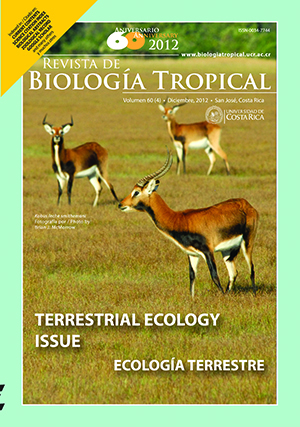Abstract
Medusae (Cnidaria: Hydrozoa) from a coastal upwelling zone, Culebra Bay, Pacific, Costa Rica. The hydromedusae have an important role in marine trophic webs due to their predatory feeding habits. This is the first study of this group of gelatinous marine zooplankton in a coastal upwelling area of Central America. The composition and abundance variability of hydromedusae were studied during six months in 1999 at four stations in Culebra Bay, Gulf of Papagayo, Pacific coast of Costa Rica (10o37’ N-85o40’ W). A total of 53 species were identified, of which 26 are new records for Costa Rica, 21 are new records for Central America, and eight are new records for the Eastern Tropical Pacific. The more abundant species (more than 30% of the total abundance) were Liriope tetraphylla, Solmundella bitentaculata and Aglaura hemistoma. Six species occurred throughout the sampling period, 10 were present only during the dry season (December-April), and 17 were so during the rainy season (May-November). Significant differences of medusan abundances were found between seasons (dry vs. rainy). Maximum abundance (2.1±4.3ind./m3) was recorded when upwelled deeper water influenced the Bay, as indicated by local higher oxygen concentrations and lower water temperatures. The relatively high species richness of medusae found in Culebra Bay is probably related to factors like the pristine condition of the Bay, the arrival of oceanic species transported by the Equatorial Counter Current (ECC), the eastward shoaling of the Costa Rica Dome, and local currents. Illustrations of the 15 more important species are included to facilitate their identification and foster future work in the region.
This work is licensed under a Creative Commons Attribution 4.0 International License.
Copyright (c) 2012 Revista de Biología Tropical

